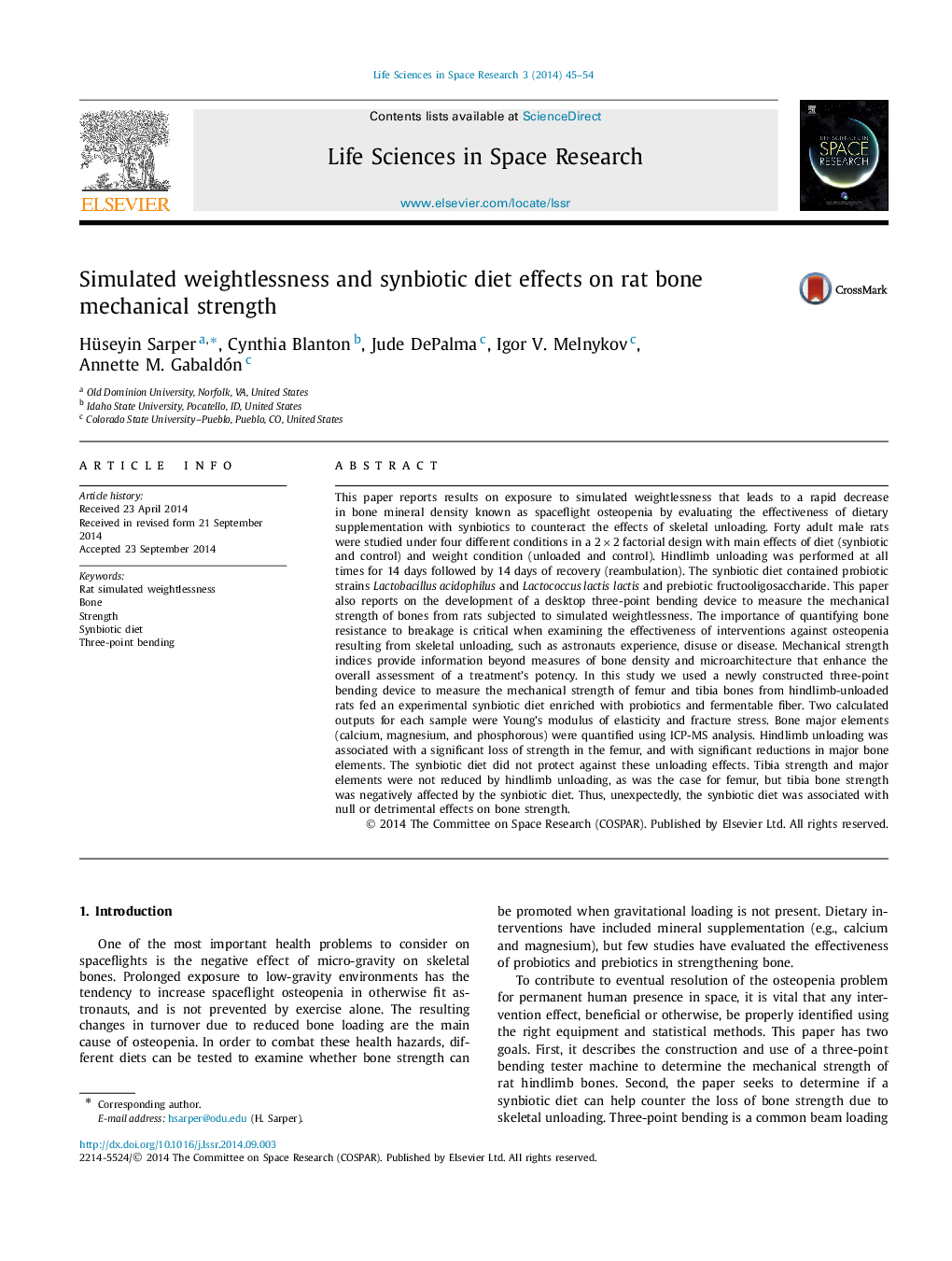| کد مقاله | کد نشریه | سال انتشار | مقاله انگلیسی | نسخه تمام متن |
|---|---|---|---|---|
| 1880773 | 1533321 | 2014 | 10 صفحه PDF | دانلود رایگان |
• Four cohorts of rats were divided into groups allowing for controlled surveillance of the interrelation of hindlimb suspension and diet.
• Two different methods were used to render calculations of Young's modulus and fracture stress.
• Mathematical transforms of acquired data for force/deformation were modeled. Models generate statistically significant findings.
This paper reports results on exposure to simulated weightlessness that leads to a rapid decrease in bone mineral density known as spaceflight osteopenia by evaluating the effectiveness of dietary supplementation with synbiotics to counteract the effects of skeletal unloading. Forty adult male rats were studied under four different conditions in a 2×22×2 factorial design with main effects of diet (synbiotic and control) and weight condition (unloaded and control). Hindlimb unloading was performed at all times for 14 days followed by 14 days of recovery (reambulation). The synbiotic diet contained probiotic strains Lactobacillus acidophilus and Lactococcus lactis lactis and prebiotic fructooligosaccharide. This paper also reports on the development of a desktop three-point bending device to measure the mechanical strength of bones from rats subjected to simulated weightlessness. The importance of quantifying bone resistance to breakage is critical when examining the effectiveness of interventions against osteopenia resulting from skeletal unloading, such as astronauts experience, disuse or disease. Mechanical strength indices provide information beyond measures of bone density and microarchitecture that enhance the overall assessment of a treatment's potency. In this study we used a newly constructed three-point bending device to measure the mechanical strength of femur and tibia bones from hindlimb-unloaded rats fed an experimental synbiotic diet enriched with probiotics and fermentable fiber. Two calculated outputs for each sample were Young's modulus of elasticity and fracture stress. Bone major elements (calcium, magnesium, and phosphorous) were quantified using ICP-MS analysis. Hindlimb unloading was associated with a significant loss of strength in the femur, and with significant reductions in major bone elements. The synbiotic diet did not protect against these unloading effects. Tibia strength and major elements were not reduced by hindlimb unloading, as was the case for femur, but tibia bone strength was negatively affected by the synbiotic diet. Thus, unexpectedly, the synbiotic diet was associated with null or detrimental effects on bone strength.
Journal: Life Sciences in Space Research - Volume 3, October 2014, Pages 45–54
